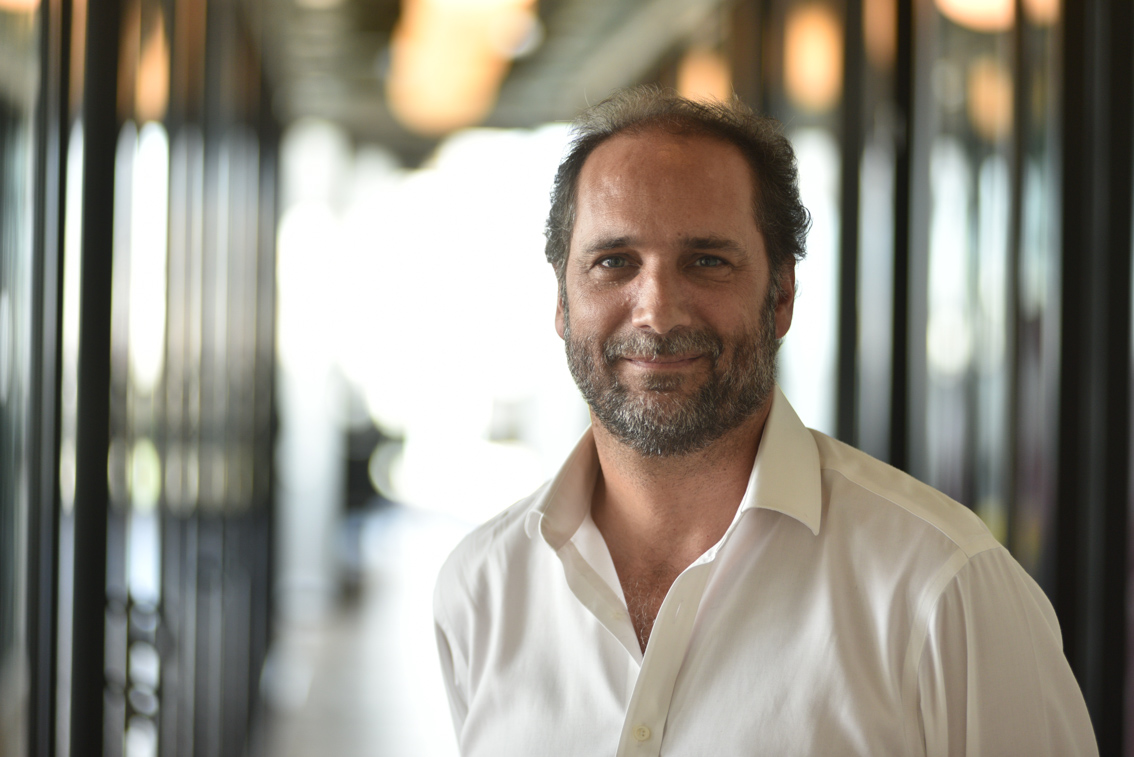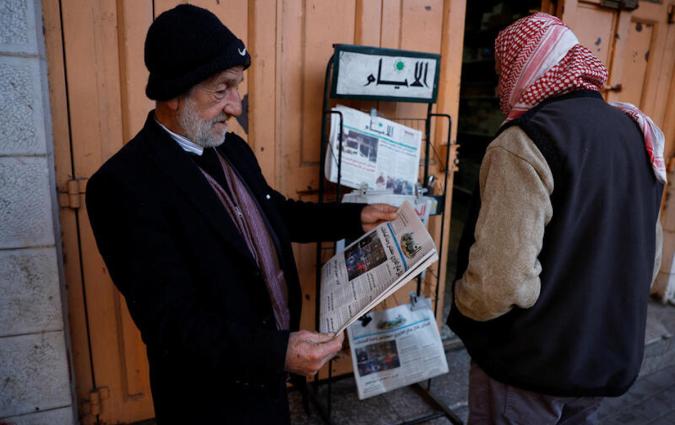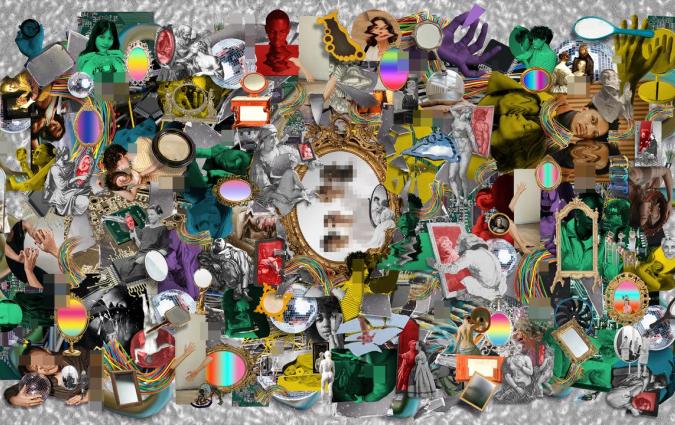
Our podcast: How to build a successful value-driven membership model

The topic
In this episode of our podcast, we hear from Chani Guyot whose news website RED/ACCIÓN runs a successful membership model that goes beyond being a revenue stream. We look at how the news outlet engages with members as part of its journalistic mission, and how listening closely to the needs of their audience is a step towards building trust and empathy and bridging polarisation in society.
The speakers
Guest: Chani Guyot is the CEO and Publisher of Argentinean news site RED/ACCIÓN. He is former Editor-in-Chief of La Nación, one of the country's biggest newspapers.
Host: Federica Cherubini is the Head of Leadership Programmes at the Reuters Institute.
The podcast
On Spotify | On Apple Podcasts | On Google Podcasts
The transcript
On leaving La Nacion to found RED/ACCIÓN ↑
Chani: I would say I entered La Nación when I was 27 years old, a long time ago, and I followed a very particular path down there, designer, graphics editor, design director, innovation director and finally editor-in-chief. And after 21 years at the company and four years as editor-in-chief, I decided to step down and I would say, sort of, to change the nature of my challenges. Of course, it was a big and beautiful challenge to leave that talented newsroom of almost 200 people and we work and we do have a lot of fun and success in bringing into the 21st century a great media brand, born in the 19th century.
But, on the other hand, today I feel that it is also an enormous and also a beautiful challenge to create a new media venture from scratch. So bringing a small but also very talented team that, by building this new media, we are trying to answer some essential questions to our craft, to journalism and also to media. So how can we acknowledge media fatigue and the media avoidance phenomenon, for example, or how can we cover the most pressing social issues we face as a society and cover it in a different way. And probably the most interesting question, how does this particular experience of the 21st century, people’s participation, can affect journalism.
So I would say that at the core of RED/ACCIÓN, we are trying to hack, like the broadcast one way, or the monologue paradigm that was born with mass media. And it’s one of the challenges our industry is facing. I’m sorry, it wasn’t short, the answer, but I have two more things to say. There is almost no secure job now in our industry, I think everything is at risk. And acknowledging that, I think, it’s a good thing. And on the other hand, I believe that in the end, I guess, that why I stepped down being the editor-in-chief of a great media, well, I guess it has to do a lot with a very personal calling.
On rebuilding social empathy through human journalism ↑
Chani: We believe that the problems we are facing as society, the challenges are very complex and, of course they demand complex, many times, complex solutions. And we are not going to find those solutions without an open dialogue between institutions, politicians and citizens. So polarisation, for example, is almost the name of the social conversation today and is preventing us finding those solutions and in that sense, I believe journalism has an important role. In terms of showing other works, helping us understand other opinions, so there is a role for anybody. We take this very seriously at RED/ACCIÓN, so we’ve been trying new formats that help our audience, to have more empathy with different lives, people that live in a different way or think in a different way than myself. So it has to do with how we build a more robust citizenship that helps that public dialogue to evolve and find real solutions. Because those dialogues might, should have at the end, some impact in personal and institutional decisions.
On RED/ACCION's audience ↑
Chani: Our audience is mostly young but not just young people, that are already worried about this pressing social issue and they want to do something about it. They already think they can commit themselves, in a way, on those discussions and sometimes in specific actions. We do a lot of curation, we have 12 newsletters, and so there we try to be very balanced in which voices we put on the table. We do very little political coverage, specific political coverage so, in a sense from that point of view, everybody can read our newsletters or our journalism, despite where they stand. So it’s not easy and, of course, as every media, sometimes people accuse us of being one side of the road. But we believe that keeping an open conversation with every side, is very important. I mean, it’s not just giving the mic to different opinions but bringing in arguments and trying to, that helps us to understand better problems and solutions.
On addressing polarisation and declining trust ↑
Chani: The lack of trust in media is getting worse and worse every year. The Digital News Report by the Reuters Institute showed a significant decrease in trust in media. Only one third of Argentinians that respond to that study trust news overall, going down from, I think, it was 40% the previous year. And also, for example, the Edelman Trust Barometer says that 71% of Argentinians agreed that media is not doing well at being objective or non-partisan. So the most important thing here is that you need to keep an open conversation, you need to hear the other side, you need to bring in people that think different but are also open to listen different arguments. And the problem is, in most media in Argentina, you can find in the same media, some quality reporting but usually mixed with political biases, mistakes, soft clickbait and this is creating a news environment full of noise. I believe that that’s the main reason around why we are seeing this decrease in media trust.
On an engaged membership model ↑
Chani: Our membership programme is much more than a revenue stream. We consciously assume that with our journalism, that we are particularly serving our most-engaged readers and those are our members. We create several mechanisms by which we communicate with them, we ask them lots of questions every week in our member newsletters, we invite them to participate in several ways in journalism. And I believe that these models, subscription and memberships, create an excellent, clear and transparent sense of the value you are creating. Because if someone has opened his wallet or her wallet, it is because you are delivering value, a valuable experience beyond clicks and it’s really a different game than the volume game that seeks for the advertising money.
On the need for a clear value proposition ↑
Chani: You have to have a very clear sense of what is your value proposition. You have to do the work first. And then you have to have a good narrative also and that’s not easy also because there are not many membership models in Argentina. There are some very successful subscription models with paywalls, metered paywalls. But we found that, we have just ran a poll around all our members and the number one reason why they are members is because they want to support the kind of journalism we are crafting. So I would say that of course, we need to make it much bigger, we need to increase our members.
But we are following a very detailed path of what does it mean to be a member of RED/ACCIÓN. What are you getting, what are you giving and how you are part, in a sense, of our journalism? Of course, our newsrooms and our journalists have a role and they have an important role regarding that conversation we have with our members. But on the other hand, our churn is very, very low, so we believe we are creating a sustainable model around this kind of journalism.
On the membership model's success so far ↑
Chani: Today, the membership revenue stream represents around 18% of our revenues. We do have a very big and successful newsletter operation, so the most important part of our revenues are brands that are sponsors in our newsletters. And they have their space. We put a lot of work into very personal, very special newsletters, some daily, some weekly. We have around 30,000 subscribers and they are brands that are sharing their message with our audience. It's the number one revenue stream. The audience membership stream is getting bigger but it’s slow. We believe it’s a slow path where you need to be adjusting lots of fine details and at the end, the experience that comes up from that detail, it can give you the base for a robust membership model.
But we have some small examples that we believe are working very good. Every week, we have a person responsible for membership, every week, she calls sort of three or four new members and she asks two questions mainly. Number one, why did you decide to become a member of RED/ACCIÓN? Number second, what do you expect? And of course, she says also what you are getting for being a member and so on. So we are tracking every week, very closely, with our new members, how are we doing at work, what are the expectations? And I have to say, also, many times, great ideas came from those conversations. So, of course, there is always the question of scale, you can do this while you have a certain scale. But in many senses, I feel that what we are doing at RED/ACCIÓN is a different kind of game than being a mass media or, what I call these broadcast monologue or one-way delivering of content. And it has much, it has a lot to do with the idea of service, of thinking of the media and its journalism as a service, not just as a product.
On journalists working with members ↑
Chani: We have one person specifically that is responsible for talking with members and asking questions and handling that relationship. But we have many stories that are reported with the help of our members. All our journalists, at one point, they have to interact with our members. We have several models. On one hand, for example, we can build a WhatsApp group with, let’s say, six, seven or eight members that follows with a journalist while he’s reporting. So he will ask questions, he will share information. So in a sense, at the end, when the journalist sits down and writes the story, he has at his hands and in his head, the relevance criteria of our audience that was represented by this small group, in this WhatsApp, for example. So this is one of the mechanisms. On the other hand, we have a participation editor that works with the reporters to see the opportunities we have in bringing in these readers’ or members’ experience, opinions or knowledge.
On a membership-focused mindset ↑
Chani: I would say that of course you can have the tools and you can have the processes but, as you said, it’s a mindset and it was not easy to develop. We are a small organisation, we are 18 people, but it took us a time to really understand and craft this idea and the experience that your audience can actually add to your journalism a lot of value. And let me give you an example. We ran an Instagram story around the relationship of young people, how do you handle, how do you relate with your money and the future of your money? Of course, in this context, it’s a very critical topic. Of course, we have more than 3,000 participants, people that vote in the polls and tell us their stories, how they feel and that.
We analysed all that, almost by hand because you don’t have the tools, for example, inside Instagram stories to do that. We ran a story where, of course, almost every opinion or position was represented. The story also had the voice of the experts, of course. And then we make an event and we invite everybody to this event around this topic. And when you see all that process with a certain perspective, it looks quite a lot like a conversation between the audience and the newsroom. So we believe that there’s something different there in the way we understand our audience needs and that opportunities of participation. And on the other hand, those kind of jobs can never be done by just one person, just one reporter. So it really obliges, also, to create spaces and groups and processes so that you can handle a conversation that may last one month, that may have many products and that, in a sense, maybe someone answers that Instagram story and then reads the story and comment and then he came, or she came, into the event. And when that’s the kind of journalism that we are trying to develop.
On what makes a RED/ACCION journalist ↑
Chani: On the one hand, we need talent, of course. When you build a start-up, you need a lot of talent so we bring in people – and talent is a currency also, it’s not just something that you have. So we bring in people that are eager to learn and to experiment. And that is one of the most important things. People that can tolerate uncertainty also, as in every start-up. People that embrace doing new things or different things and that is also open to experimentation and team learning. So when I describe all these things, there is one particular aspect of us journalists that kills everything which is ego. So we journalists, we are all full of ego, generally.
So that’s what we are not looking at, and it’s not always easy in terms of you need people with some experience. And then we have, like, this obsession with diversity, in many senses. Because really any conversation, any teamwork, explode or can explode if there’s diversity in the room. So we have like, two people of 22 years, very, very young. I’m 51, we have a reporter 55, it’s a really diverse in many senses, religion, political. So you have to, you need a sort of playful mind in order to also have fun while creating a media start-up in the worst moment, in the worst place, in the worst time for our industry.
On creating news you can use ↑
Chani: I believe that after one year of pandemic, at least RED/ACCIÓN, and I see it in many other media markets, there are two kinds of journalism formats that are really taking, in my opinion, the poll position. One is explainers and the other one is news to use, and sometimes some pieces can be both at the same time. But, I mean, we are living in a time of huge uncertainty so the need to understand, well, in our case, drives us to create some special reports around which is the world we are facing. But not just like China and Europe and US or the Global South, what is the world we are facing in our own lives, what is the world we are facing in our health, in our families.
So this takes us to the second aspect or chapter that is news to use. So we make lots of simple, small pieces, it takes a lot of work to make them small and simple. So how to work from home, how to deal with children’s screens, how to take care of your mental health in this time of quarantine. So that’s news to use and the explainers. Our last hit was how the herd immunity works, of course. The thing is that in many media, these kinds of stories are like the colour stories or like the side stories. We find that we need to put them in the centre of our journalism, pay them a lot of attention, put a lot of resources on that. And I believe that it has a lot to do with considering that you are serving your audience, trying to help your audience solve their problems. So this is also an important mindset in terms of how you understand your journalism and the function of your journalism regarding your audience.




